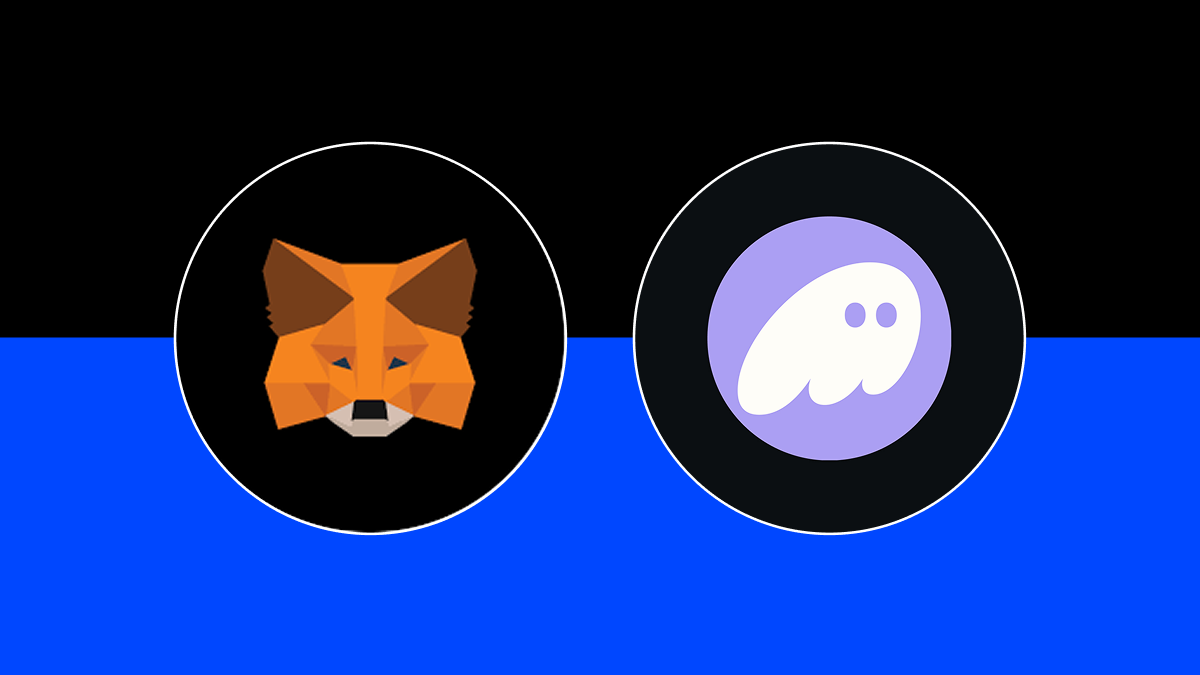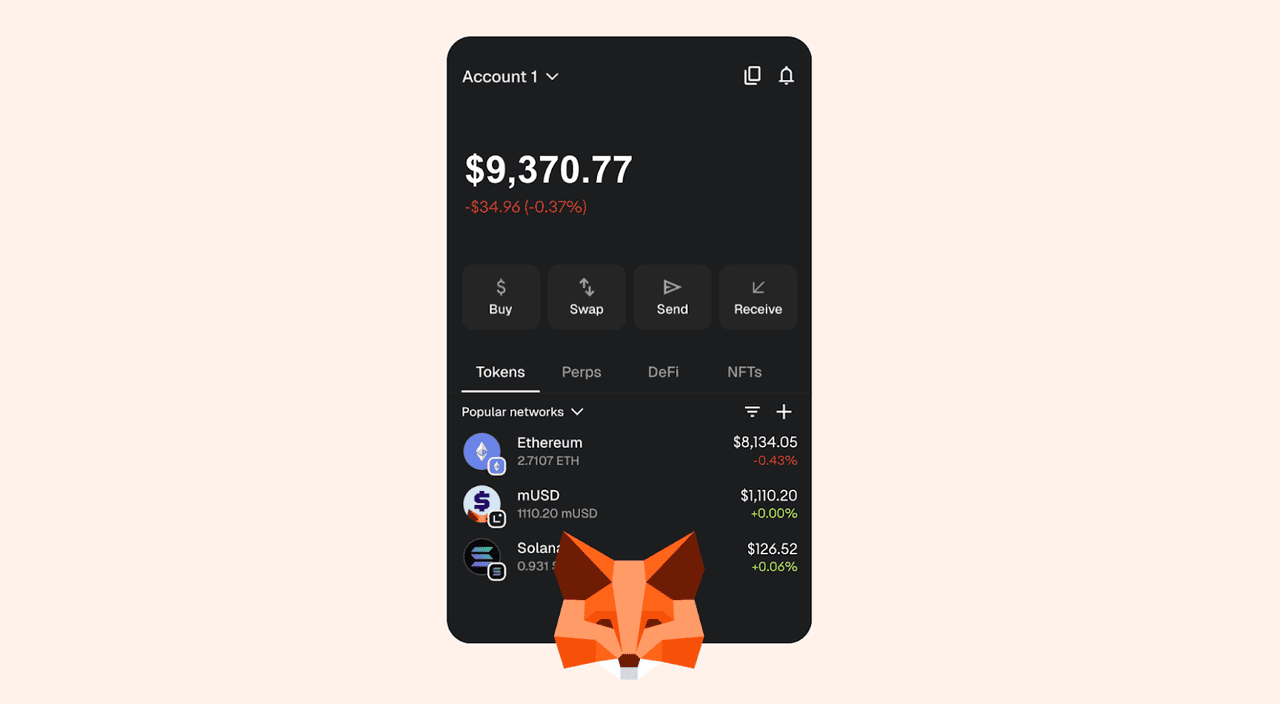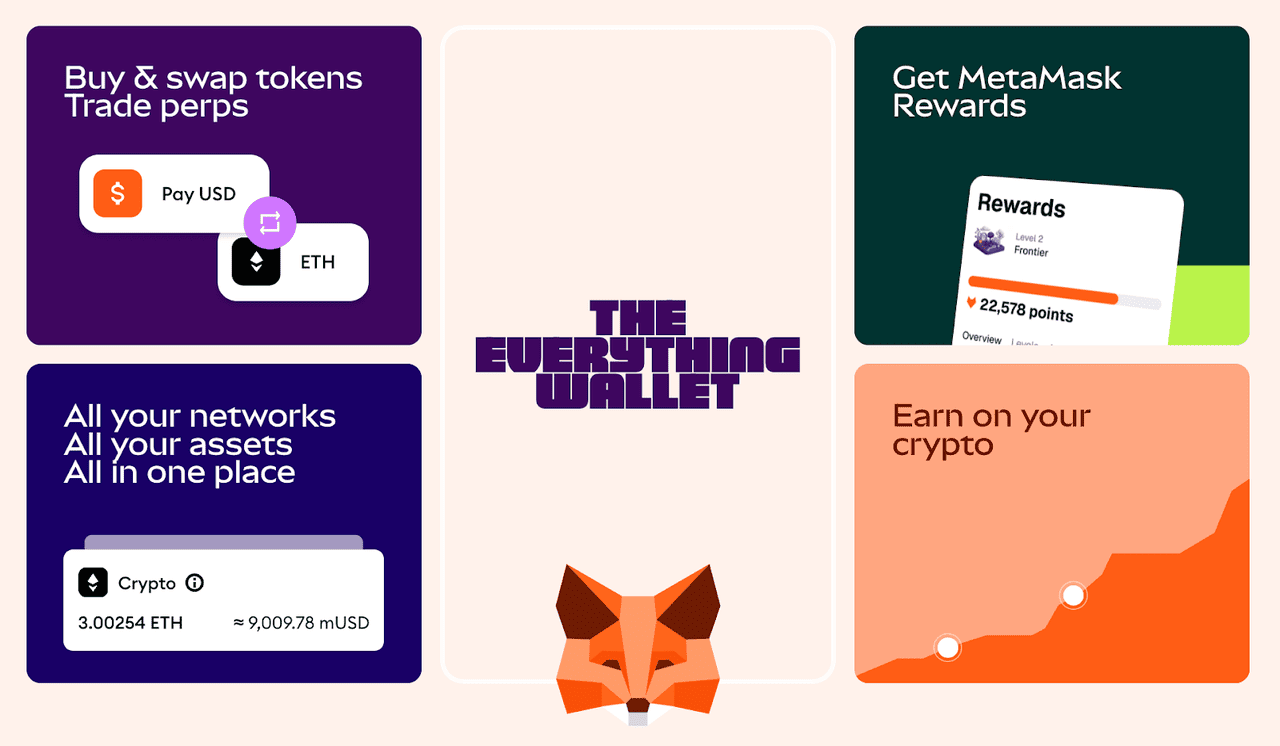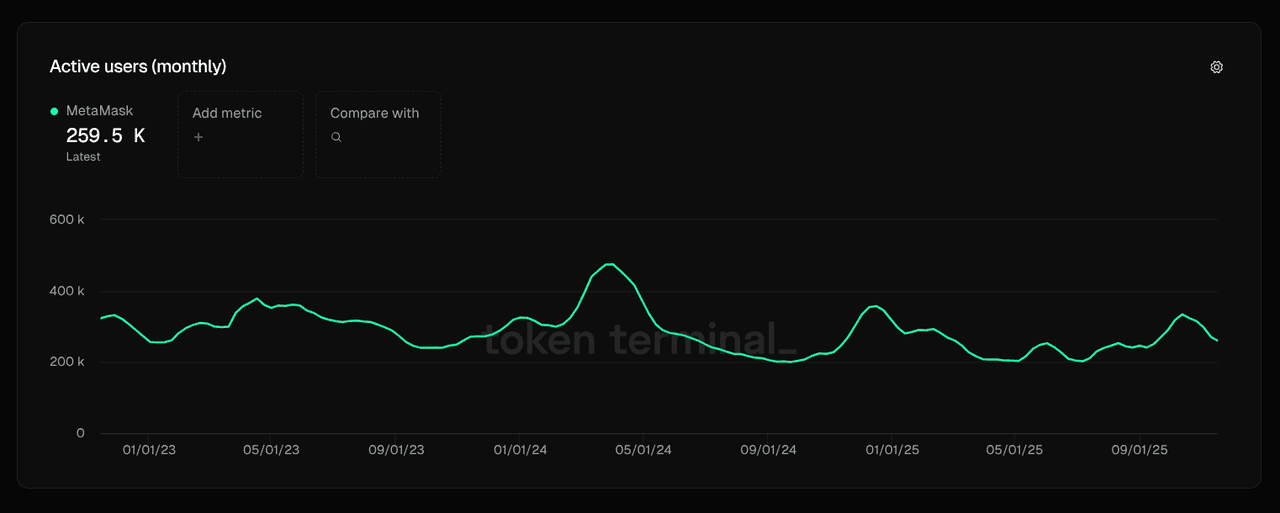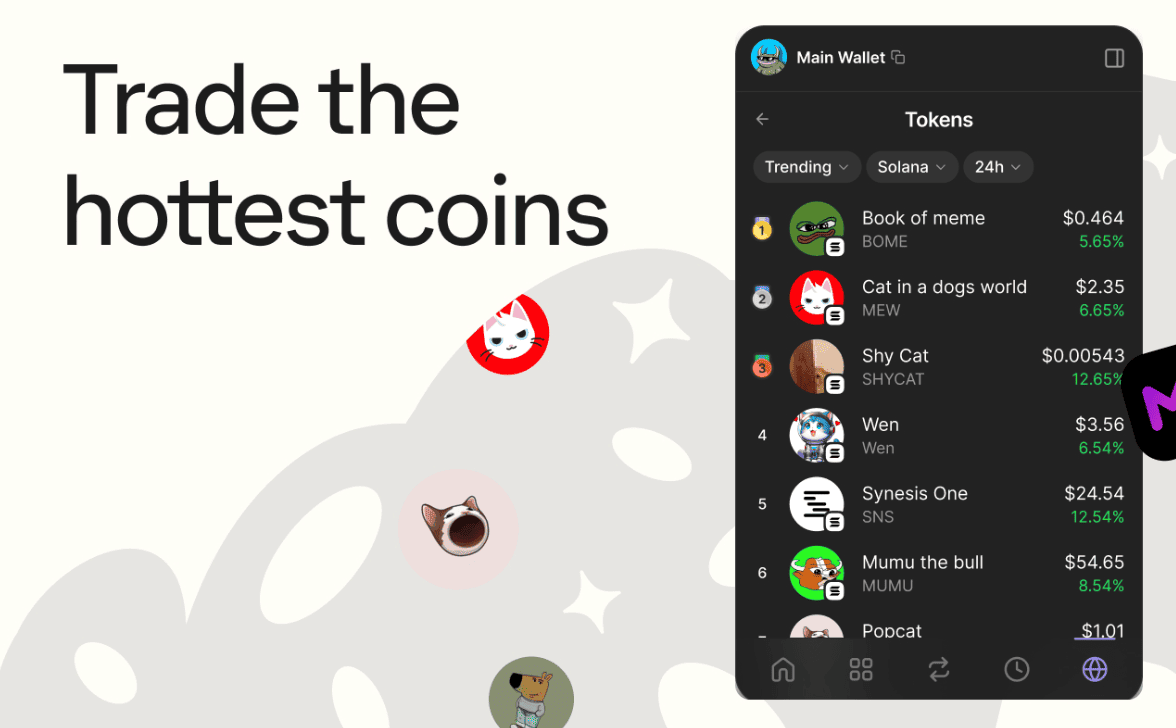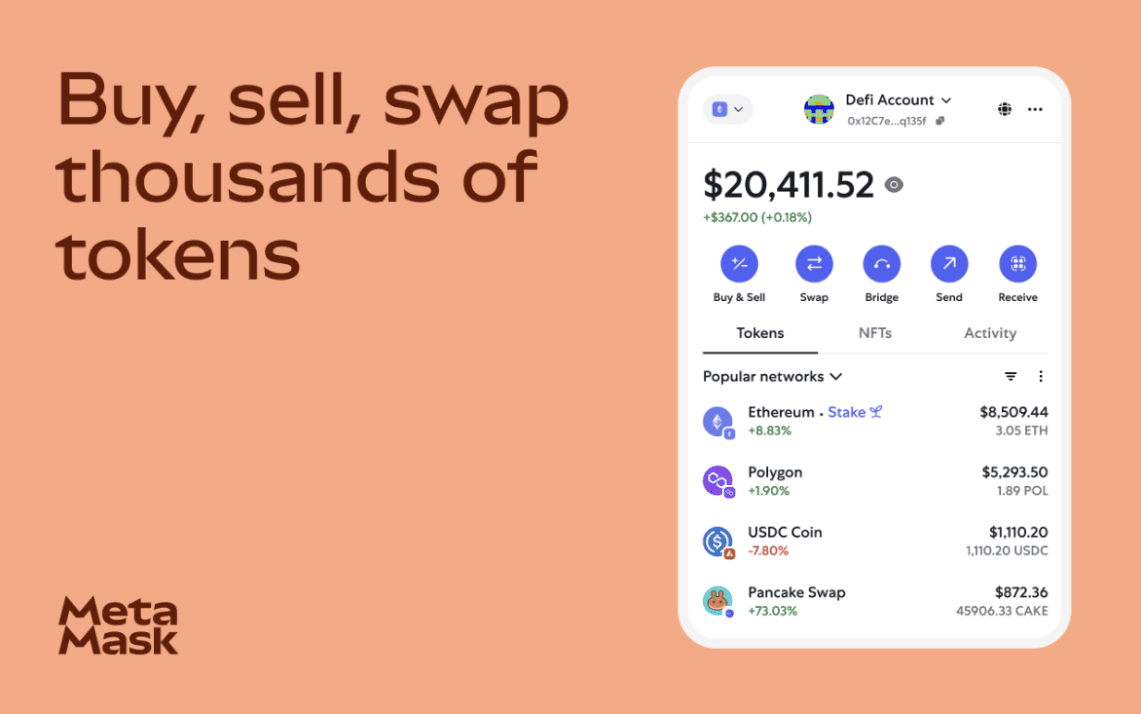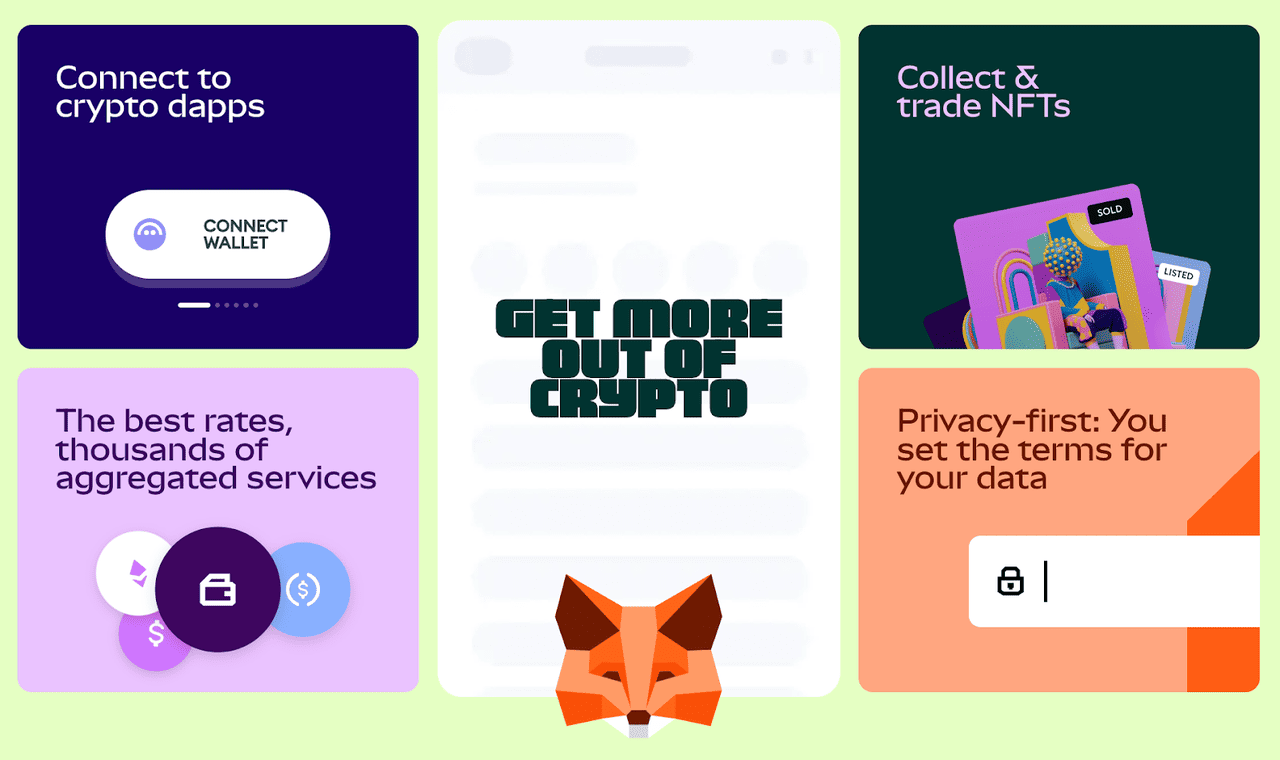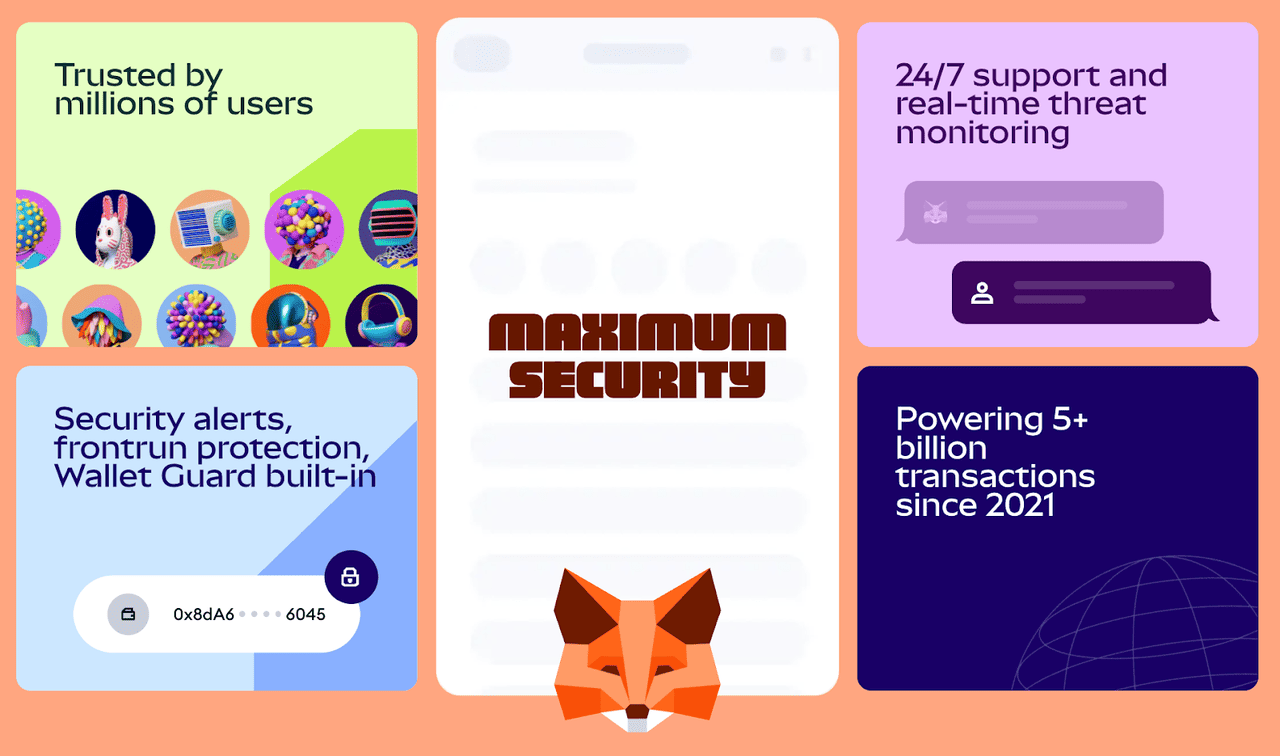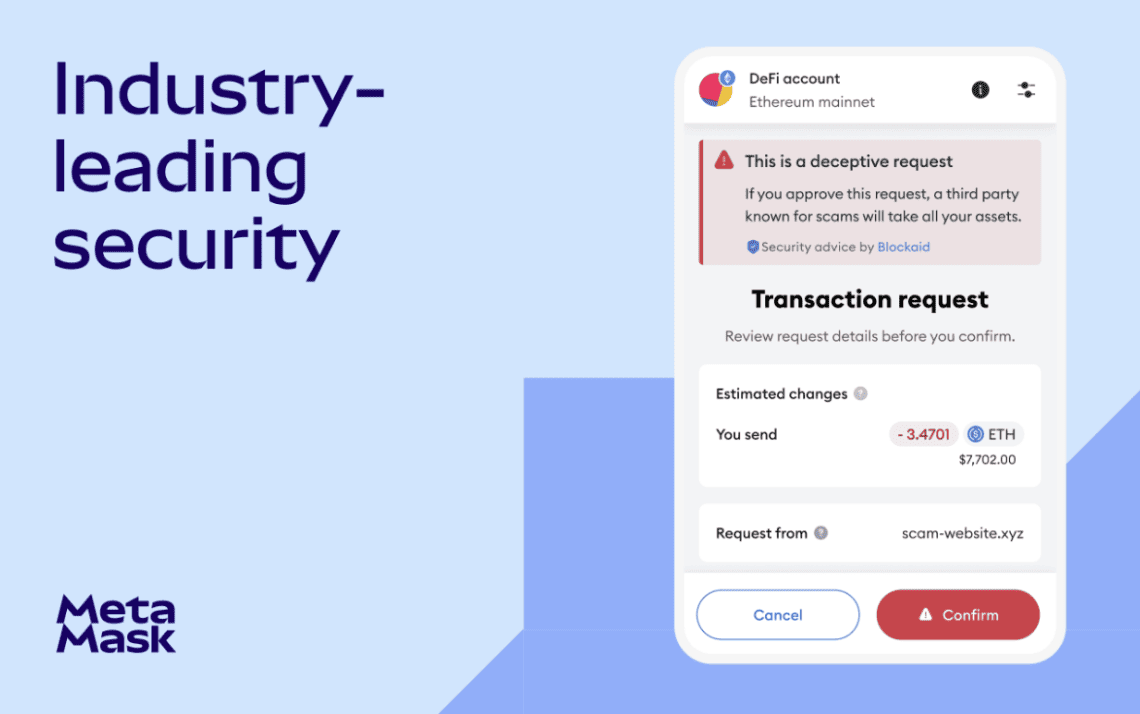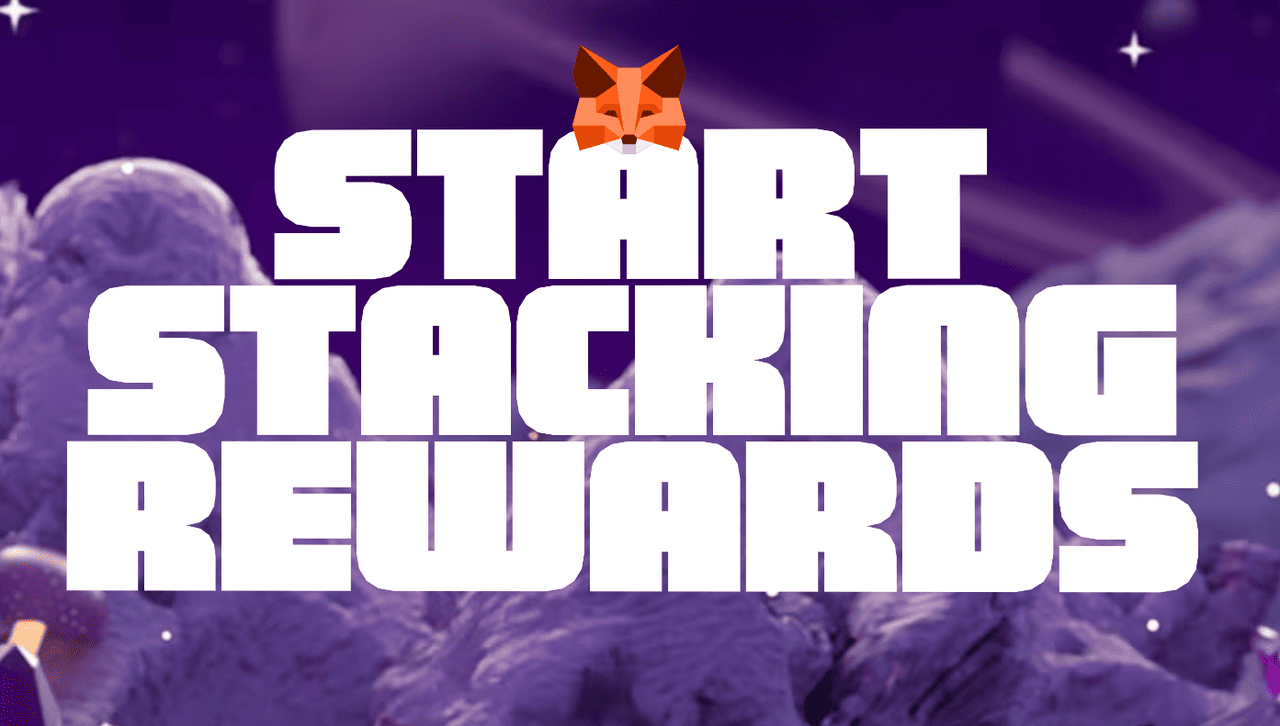MetaMask and Phantom are two of the most widely used
non-custodial wallets each serving different parts of the blockchain ecosystem while expanding into new features such as multichain swaps,
staking rewards, DApp connectivity, and
NFT management.
MetaMask boasts a significantly larger user base, with over 30 million monthly active users, making it the dominant wallet, particularly within the
Ethereum ecosystem. MetaMask can connect to access thousands of decentralized finance platforms on Ethereum and other EVM-compatible networks as well as non-EVM chains such as
Bitcoin and
Solana via Snaps.
Phantom was initially focused on Solana, has grown to support multiple chains and now serves over 15 million monthly active users, steadily expanding its presence beyond its original network.
As crypto adoption continues to grow in 2025, more users are choosing between these wallets based on supported blockchains, security, ease of use, and access to emerging technologies. This comparison covers every major category to determine which wallet is better for different types of users.
What Is MetaMask Web3 Wallet?
Source: MetaMask
MetaMask is a non-custodial crypto wallet created by Aaron Davis and Dan Finlay under ConsenSys. It launched in July 2016 and quickly became the most widely used
Ethereum wallet, eventually expanding to support many EVM compatible blockchains. MetaMask operates as both a browser extension and mobile app, allowing users to store, send, and swap tokens across networks such as Ethereum,
Polygon,
Arbitrum,
Avalanche,
Base, and many others.
Because the wallet was designed around the Ethereum ecosystem from the beginning, it became the default gateway for interacting with DeFi, NFTs, and thousands of
DApps. MetaMask continues to grow with features like portfolio tracking, bridging tools,
hardware wallet connections, and the new 30M Linea-based reward system linked to the upcoming
MetaMask airdrop.
What Is Phantom Web3 Wallet?
Phantom was founded by Brandon Millman, Chris Kalani, and Francesco Agosti and launched in July 2021 as a Solana focused wallet before expanding to support Ethereum and Polygon. It became one of the fastest growing mobile and browser wallets thanks to its streamlined interface and extremely fast transaction handling on Solana. Phantom allows users to manage assets across multiple chains, interact with NFTs, access DApps, and perform in-app swaps through Solana and EVM liquidity sources. Its design centers on simplicity while still offering advanced tools such as multichain NFT galleries, transaction simulation, phishing alerts, and automatic spam token filtering.
What makes Phantom stand out is its deep integration with the Solana ecosystem. Phantom Wallet is one of the most popular non-custodial
wallets built for the Solana blockchain. Known for its sleek design and intuitive interface, Phantom lets you do far more than just store tokens. It’s your all-in-one access point to the vibrant Solana ecosystem.
Whether you're
staking SOL to earn passive income, trading on
top Solana DEXs like
Jupiter and
Raydium, or minting trending memecoins on platforms like
Pump.fun, Phantom provides the tools to participate in it all. You can also manage stablecoins like USDC and UXD, bridge assets across chains, and even interact with NFT marketplaces and DeFi protocols, all directly from the wallet.
MetaMask vs. Phantom: Key Similarities and Differences
Monthly Users on MetaMask. Source: Token Terminal via MetaMask
1. Key Features
MetaMask functions as both a browser extension and a mobile app, giving users access to Ethereum and EVM-compatible networks. It allows for custom network additions, supports hardware wallets like Ledger and Trezor, and offers an integrated swap engine using liquidity from multiple decentralized exchanges. MetaMask Institutional provides advanced features for organizations and developers, while standard users benefit from a streamlined interface for interacting with thousands of dApps.
Phantom is primarily a mobile-first wallet designed for Solana, with a browser extension released in 2022. It offers a built-in DApp browser, native staking for SOL and other supported assets, and seamless token swaps directly in-app. Phantom also supports cross-chain assets including Ethereum and Polygon via wrapped tokens, providing users access to multiple ecosystems while maintaining a focus on speed, low fees, and Solana-native experiences.
i. Who Created the Wallets and When Were They Launched?
MetaMask was created by Dan Finlay and Aaron Davis and launched in July 2016 through ConsenSys. The wallet was designed to make Ethereum and Web3 applications accessible to mainstream users while giving individuals full control over their private keys. Over the years, it has grown into one of the most widely used crypto wallets, with millions of active users globally.
Phantom was founded by Brandon Millman and Brandon Momberger and launched in January 2020. Its goal was to simplify the user experience on Solana, particularly for NFTs, DeFi, and token swaps. Phantom’s focus on speed, usability, and mobile-first design has made it the most popular Solana wallet, with strong adoption among gamers, NFT collectors, and DeFi users.
ii. Ease of Use
MetaMask provides a clean, intuitive interface for Ethereum and EVM users, but adding new networks often requires manual configuration. While experienced users appreciate the flexibility and multi-chain support, beginners may find the initial setup more technical. Features like quick wallet creation, network switching, and transaction monitoring help reduce friction for regular users.
Phantom offers an extremely user-friendly experience, especially for Solana users. Most networks and tokens appear automatically, and the integrated DApp browser streamlines interactions with decentralized applications. Beginners benefit from its mobile-first design and simplified staking and token management, requiring minimal technical knowledge to get started.
iii. Fees
MetaMask charges swap fees ranging from 0.30% to 0.875%, depending on the liquidity route. Network transaction fees vary by blockchain and are determined by each network’s gas costs. Users need to plan for variable Ethereum gas fees or other EVM-compatible chain costs when performing token swaps or sending assets.
Phantom does not charge wallet fees, but users pay blockchain-specific gas costs when performing transactions on Solana or other supported chains. Native swaps in Phantom are optimized for minimal fees, and Solana’s low-cost transactions make it highly cost-effective for frequent transfers or swaps.
iv. Pros and Cons
MetaMask is highly versatile, offering access to Ethereum-based assets, thousands of dApps, developer tools, and institutional-grade features. Its compatibility with hardware wallets ensures secure management of private keys. However, it has limited native multi-chain support outside EVM networks, and swap fees can be higher than some competitors. Unlike many online wallets, MetaMask prioritizes your privacy and security, keeping no user-identifiable information. Your keys and
secret phrases remain entirely under your control, not even MetaMask or ConsenSys can access them.
Phantom provides native support for Solana and emerging cross-chain assets, easy mobile management, staking features, and an integrated DApp browser. Its low fees and simple interface make it ideal for newcomers to Solana. Drawbacks include less advanced developer tooling compared with MetaMask and reliance on wrapped or bridged assets for non-Solana networks.
2. MetaMask vs. Phantom: Supported Blockchains and Native Token Swaps
MetaMask primarily operates on Ethereum and other EVM-compatible chains, giving users the ability to manage assets across multiple networks like Binance Smart Chain, Avalanche, and Polygon. It also supports custom RPC networks, allowing manual addition of any EVM-based chain. The built-in swap engine aggregates liquidity from multiple decentralized exchanges, offering competitive rates for token swaps. Users can interact with hundreds of ERC-20 tokens and take advantage of instant bridging for cross-chain activity.
Phantom, in contrast, was designed specifically for the Solana blockchain but has added support for the Ethereum and Polygon networks through its cross-chain functionality. Token swaps are natively integrated into the app, allowing users to swap SOL-based assets without leaving the wallet. Phantom also supports SPL tokens and wrapped assets, making it easy for users to manage their Solana ecosystem holdings. Its focus on speed and low fees is a major advantage for those performing frequent swaps on Solana.
3. MetaMask vs. Phantom: NFTs and DApps
Source: MetaMask
MetaMask allows users to interact with Ethereum-based NFTs and Web3 applications via its browser extension and mobile app. Users can mint, send, and receive NFTs on Ethereum and compatible chains. The wallet also integrates with thousands of decentralized applications, giving users access to DeFi protocols, games, and marketplaces. MetaMask’s custom network support means that NFTs on alternative chains like Polygon can be viewed and managed, though it may require some manual configuration.
Source: MetaMask via Chrome Web Store
Phantom offers a more streamlined NFT experience for Solana users. Its interface supports viewing, sending, and receiving SOL-based NFTs directly in the app. Phantom also provides a built-in DApp browser optimized for Solana applications, which enhances performance and ease of access. Users can quickly connect to marketplaces like
Magic Eden and Solanart and interact with games or DeFi platforms without additional setup.
Source: Phantom
4. MetaMask vs. Phantom: Staking and Passive Income
Source: MetaMask via Chrome Web Store
MetaMask itself does not provide native staking but supports connections to staking platforms through DApps. Users can stake assets like ETH via third-party protocols and manage rewards directly through the wallet. MetaMask also supports governance tokens for staking and voting in DeFi ecosystems, providing advanced users with options to earn
passive income.
Hardware wallet integration allows for secure staking while maintaining full custody of private keys.
Phantom provides native
staking for Solana and certain Solana-based assets. Users can delegate SOL to validators directly within the wallet to earn staking rewards. Phantom’s staking interface is beginner-friendly, offering clear tracking of rewards and easy delegation changes. The wallet also highlights validator performance and estimated yield, helping users make informed decisions without needing to use external platforms.
5. MetaMask vs. Phantom: Which Wallet Has Better Security?
Source: MetaMask
MetaMask provides a highly secure environment for users by combining multiple layers of protection. It uses locally encrypted seed phrases and password-protected wallets to ensure private keys remain under user control. Hardware wallet integrations with
Ledger and
Trezor add an extra layer of security, allowing offline cold storage of assets. MetaMask also employs key derivation functions, AES-256 encryption, and secure transaction signing to reduce the risk of hacks or phishing attacks.
Since its launch in July 2016 by Aaron Davis and Dan Finlay, MetaMask has powered over 5 billion transactions across Ethereum and other EVM-compatible networks, demonstrating both its security and scalability. Continuous security audits and community-driven bug bounty programs further enhance trust in the wallet.
Source: MetaMask via Chrome Web Store
Phantom focuses on Solana and other compatible chains, leveraging encrypted seed phrases, biometric authentication, and the device’s secure enclave to protect private keys. Private keys are always stored locally and never shared with external servers. The wallet includes built-in
phishing detection, transaction approval confirmations, and Solana-specific safeguards to minimize risks while interacting with fast-moving dApps. Launched in October 2021 by Brandon Millman and Drew O’Hara, Phantom has facilitated more than 5 billion transactions on Solana, highlighting its reliability and security for high-volume use. Its combination of modern mobile security protocols and Solana-optimized defenses makes it particularly suited for the network’s ecosystem.
Both wallets provide strong security foundations, but MetaMask’s extensive hardware wallet integrations and support across EVM networks make it ideal for Ethereum-based users, while Phantom’s Solana-focused security features and biometric protections cater to high-speed blockchain activity.
Source: Phantom
Which Wallet Is Better: MetaMask or Phantom?
The better wallet depends on the user’s preferred ecosystem. MetaMask remains the strongest choice for Ethereum and EVM networks thanks to deep integrations, broad DApp support, and extensive developer tools. It is ideal for users focused on DeFi, bridging, and EVM based NFTs. Phantom is better suited for users who want a clean, beginner friendly interface with fast Solana performance, automatic spam filtering, and a unified multichain layout. Users who operate mainly on Solana will almost always prefer Phantom, while dedicated Ethereum users will find MetaMask more reliable.
How to Participate in the Upcoming MetaMask MASK Airdrop
Source: MetaMask
MetaMask is running its first major reward program through
Linea Season 1, allowing users to earn points that convert into eligibility for the future MASK token airdrop. The program distributes rewards from a pool of 30M Linea tokens based on user activity across bridging, swapping, liquidity provision, and interactions with supported DApps. To maximize rewards, users can consistently bridge assets into Linea, complete swaps inside MetaMask Portfolio, interact with verified DApps, add liquidity to incentivized pools, and maintain regular weekly activity. While exact MASK distribution rules have not been finalized, active participation during Season 1 is currently the best way to qualify for the airdrop when it is released.
How to Fund Your MetaMask or Phantom Wallet
Getting started with MetaMask or Phantom Wallet is easy, and funding your wallet through BingX makes it even smoother. BingX allows you to buy popular cryptocurrencies like
ETH,
USDT, and
POL directly on its spot market, which you can then send to your MetaMask wallet to start using DeFi apps, trading NFTs, or exploring Web3.
Buy Ethereum on BingX spot market, powered by BingX AI's automated market analysis
Once you've purchased your crypto on BingX, you can send it to your MetaMask or Phantom wallet in minutes. Just copy your MetaMask or Phantom wallet address and paste it into BingX's withdrawal page. After confirming the transaction, your funds will appear in MetaMask or Phantom Wallet, ready for use in the decentralized world.
BingX is a great choice because it offers low trading and transfer fees, deep liquidity for seamless transactions, and real-time prices on major tokens. With
BingX AI providing smart market insights, plus a beginner-friendly interface and advanced security, it's easy and safe to buy crypto and transfer funds to MetaMask.
With BingX, you're set up for a fast, secure, and affordable Web3 onboarding experience.
Other Ways to Add Funds to Your MetaMask or Phantom Wallet
You can fund your MetaMask or Phantom wallet not only by transferring crypto from centralized exchanges like BingX, but also by buying crypto directly within MetaMask using integrated providers or swapping tokens via
decentralized exchanges (DEXs) like
Uniswap. These options offer flexibility, but fees, slippage, and network conditions may vary.
Conclusion
MetaMask and Phantom represent two leading options for non custodial wallet users in 2025, each with strengths tailored to different blockchain ecosystems. MetaMask is the most versatile wallet for Ethereum and EVM networks, offering powerful tools and broad DApp coverage. Phantom provides a more streamlined experience with exceptional performance on Solana and a clean multichain layout that appeals to beginners and experienced users alike. The best choice depends on where users hold most of their assets and which networks they interact with most frequently. However, as with all crypto wallets, users should remain cautious. Always safeguard private keys, be aware of phishing attempts, and understand the risks involved in interacting with decentralized applications.
Related Reading
